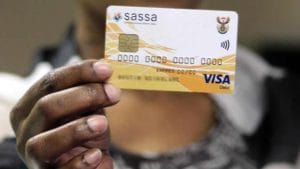Claiming a PAYE (Pay-As-You-Earn) refund from the South African Revenue Service (SARS) can seem like a daunting task, but with the right guidance and proper documentation, the process can be smooth and efficient. If you have overpaid your PAYE tax, it is your right to request a refund from SARS.
This article provides a step-by-step guide to successfully claiming your PAYE refund and ensuring that your request is processed without unnecessary delays.
Understanding PAYE Refunds
PAYE is a tax system where employers deduct income tax from employees’ salaries and pay it directly to SARS on behalf of the employee. However, sometimes, due to miscalculations, changes in employment status, or additional allowable deductions, an employee may end up paying more tax than required. In such cases, they are eligible for a PAYE refund.
SARS has established a structured process to handle these refunds, ensuring taxpayers can reclaim excess amounts paid. The key to a successful refund claim is adhering to SARS’ requirements and submitting the correct documentation.
Who Qualifies for a PAYE Refund?
Before proceeding with the claim, it is important to determine whether you are eligible for a PAYE refund. You may qualify if:
- You overpaid tax due to incorrect deductions made by your employer.
- You had a tax exemption or rebate that was not applied.
- You changed jobs and were taxed incorrectly.
- You were on a contract where PAYE deductions were miscalculated.
- You were unemployed for part of the year, but PAYE was deducted as if you worked the full year.
If any of these situations apply to you, you can lodge a refund request with SARS.
Essential Documents Required for a PAYE Refund
To successfully claim your PAYE refund, you need to submit the following documents along with the signed REV16 form:
- Proof of Payment – This includes the eSTT receipt printed from the SARS eFiling website.
- A Signed Letter Requesting the Refund – You must draft and sign a letter addressed to SARS, formally requesting your PAYE refund.
- Certified Copy of Your Identity Document (ID) – This serves as proof of identity and must be certified by a Commissioner of Oaths.
- Original Bank Statement – SARS requires an original bank statement, an ATM-generated statement, an internet banking statement, or an ABSA eStamped statement. This statement must be less than three months old and must confirm:
- Account holder’s name
- Bank name
- Account number
- Account type
- Branch code
Without these documents, your request may be delayed or rejected.
Step-by-Step Guide to Claiming Your PAYE Refund
Step 1: Gather All Required Documents
Before initiating the refund process, ensure you have all the necessary documents as listed above. Make copies and certify them where necessary to avoid unnecessary delays.
Step 2: Complete the REV16 Form
The REV16 form is the official SARS document required for requesting a refund. You can download this form from the SARS website or request it from a SARS branch. Fill it out accurately and ensure that all details match your supporting documents.
Step 3: Write a Refund Request Letter
Your request letter should be professional and include:
- Your full name and tax reference number
- The tax year for which the refund is being claimed
- A brief explanation of why you are eligible for a refund
- A clear request for the refund to be processed
Step 4: Submit Your Refund Request
Once you have compiled all the necessary documents, you can submit them through one of the following methods:
- Online via SARS eFiling: Upload scanned copies of your documents and submit them through your eFiling profile.
- In-Person at a SARS Branch: Visit your nearest SARS branch and submit your documents physically.
- Via Email: If applicable, SARS may accept refund requests via email. Check their official website for the correct email address.
Step 5: Wait for SARS to Process Your Request
SARS will assess your request and may take a few weeks to process it. If there are any discrepancies or missing documents, they will notify you for corrections.
Step 6: Receive Your Refund
If your refund request is approved, SARS will process the payment into your registered bank account. If declined, you will be informed of the reason and the necessary steps to rectify the issue.
Common Reasons for PAYE Refund Delays or Rejections
To ensure a smooth refund process, be aware of the following common pitfalls:
- Incorrect or incomplete documentation: Any missing or incorrect information can delay the process.
- Bank account verification issues: Ensure your bank details match those in the SARS system.
- Outstanding tax debts: If you owe SARS any money, your refund may be used to offset the outstanding balance.
- Failure to certify ID copies: Ensure all copies requiring certification are correctly stamped.
- Submission to the wrong SARS channel: Always use the correct SARS branch, email, or eFiling platform.
Tips to Speed Up Your PAYE Refund Process
- Ensure all documents are up to date – Do not submit outdated bank statements or uncertified ID copies.
- Use SARS eFiling – Online submissions tend to be processed faster than physical submissions.
- Check for outstanding tax liabilities – Clear any debts with SARS to prevent deductions from your refund.
- Track your request – Log into SARS eFiling or contact SARS customer service to check your refund status.
Check also: How to Correct PAYE Errors on SARS eFiling – A Step-by-Step Guide!
Claiming a PAYE refund from SARS requires careful preparation and adherence to tax regulations. By ensuring that you submit all required documents and following the correct procedures, you can expedite your refund process and avoid unnecessary delays.
If you encounter challenges, consider consulting a tax professional for assistance. With the right approach, you can successfully reclaim any overpaid taxes and receive your refund without complications.










